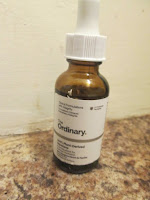Another way the very rich are different from you and me: They don't age as visibly. Partly, of course, this is because they can afford more nutritious food (see Day 2) and better health care. But also, they can invest in luxury skin care, spa treatments such as facials, "tweakments" such as Botox and fillers, and even plastic surgery. All that stuff decidedly doesn't come cheap. According to Real Self, a site that reviews beauty treatments, you can expect to pay an average of:
- $35 for a prescription skin-care product containing Retin-A (tretinoin), which can gradually brighten your skin and improve elasticity if you use it regularly for at least 4 to 6 weeks
- $208 for a HydraFacial, which reduces the appearance of fine lines for 1 to 3 months
- $535 for a syringe of Botox, which can smooth away wrinkles for 3 to 4 months
- $1,112 for a "vampire facial," which uses tiny needles to inject your skin with platelet-rich plasma pulled from your own blood, smoothing away skin damage over the course of multiple treatments and lasting 9 to 18 months
- $3,229 for a "liquid facelift" that combines Botox with dermal fillers, improving wrinkles and moderately lifting sagging skin for up to 2 years
- $16,690 for a full facelift—the most expensive option, but the only one that will last 10 years or more
None of these, obviously, will fit into a tight budget. Even the $35 topical treatment, with its modest effects, will run you $420 a year if you restock monthly. The rest, if you keep them up regularly, will most likely cost a grand or more per year.
The most economical approach to beauty, obviously, would be to decide to love yourself wrinkles and all. But I'll admit that's not easy. Throughout my late forties, I found myself growing more and more dissatisfied with the face in the mirror, which didn't look like the way I thought of myself. I kept browsing the list of pricey treatments on Real Self, but I could never convince myself that any of them would be worth the money.
Finally, on my 50th birthday, I decided to spring for something that looked like it could give me just a little bit of a boost. I invested $150 (on sale) in a mini microcurrent device that claimed it could "significantly improve skin firmness & elasticity" in just a few minutes a day. The evidence for the effectiveness of microcurrent wasn't terribly strong, but I'd seen a few studies suggesting it could have at least a small benefit, and even if it didn't help at all, I wouldn't be out as much money as I would for a pricey professional treatment. I did a little research first to make sure that it would work without the expensive serums the company sells to go with it and found that a homemade conductive gel made from aloe vera gel with a bit of ordinary table salt could get the job done.So did it work? Well, you can judge for yourself. Here's the "before" picture I took of my face in January 2023 (shot in the bathroom mirror because I'm hopeless at selfies):
And here's the one I took in May, after a few months of using the device nearly every day.
It's not a dramatic difference, to be sure, but many of the before-and-afters on Real Self are just as subtle, and for treatments that cost considerably more.
Another beauty booster I considered was collagen supplements. Once again, there were some studies suggesting that taking them regularly could improve skin texture and elasticity. But there were two problems: first, most brands contain bovine collagen, which isn't vegetarian-friendly, and second, even a relatively inexpensive brand like Vital Proteins costs around $1.25 a dose—over $450 a year if you take it daily. (You can get "marine collagen" made from fish instead, which would work with my flexitarian diet, but it's even more expensive.) Searching for a vegan alternative, I happened on some research about the benefits of aloe sterols found in plain old aloe vera gel. I found an aloe vera supplement that cost only pennies a dose and started taking that daily. Once again, the effects are subtle at best, but it certainly isn't doing me any harm, and it could potentially have benefits for my blood sugar as well. So, for such a low cost, I see no real downside to keeping it up.
The latest addition to my low-budget beauty routine is my Treat for Today: a little bottle of plant-derived squalane oil. This stuff is derived from squalene, a natural oil produced by your skin, and Cleveland Clinic reports it's good for hydration and can "slow the signs of aging." This little bottle from The Ordinary cost me only $10, and a little of it goes a long way; just five or six drops is sufficient to moisturize my entire face and neck. I use it in the evening, after using the microcurrent device and before applying my rosacea meds, and I don't need any additional moisturizer on top of that. It hasn't miraculously firmed up my skin, but it does leave it nice and soft, and for less than ten cents a dose, it adds an affordable touch of luxury to my evening routine.Do I truly have the skin of a rich person? Almost certainly not. But is my budget beauty routine keeping me in pretty good shape for 52? Almost certainly yes. I mean, hey, Cameron Diaz and Jennifer Garner are my age, and they don't look that much better without makeup than I do.








No comments:
Post a Comment